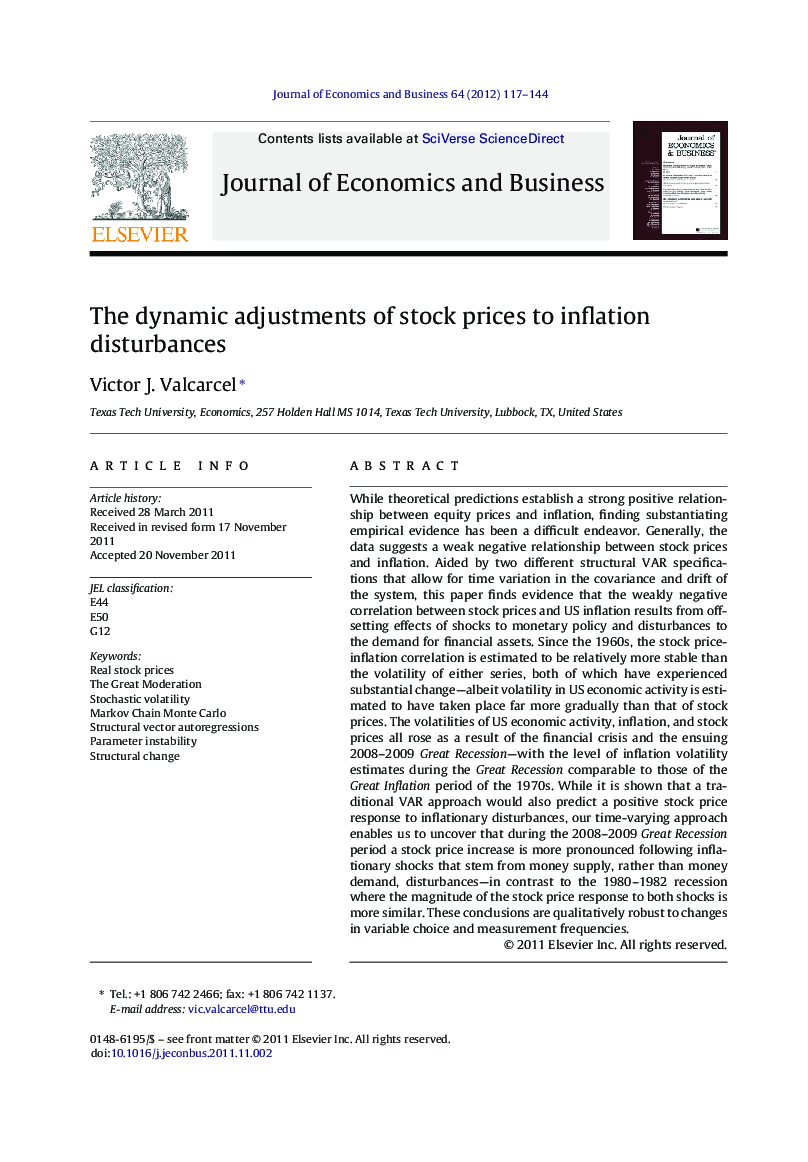| کد مقاله | کد نشریه | سال انتشار | مقاله انگلیسی | نسخه تمام متن |
|---|---|---|---|---|
| 958187 | 928891 | 2012 | 28 صفحه PDF | دانلود رایگان |

While theoretical predictions establish a strong positive relationship between equity prices and inflation, finding substantiating empirical evidence has been a difficult endeavor. Generally, the data suggests a weak negative relationship between stock prices and inflation. Aided by two different structural VAR specifications that allow for time variation in the covariance and drift of the system, this paper finds evidence that the weakly negative correlation between stock prices and US inflation results from offsetting effects of shocks to monetary policy and disturbances to the demand for financial assets. Since the 1960s, the stock price-inflation correlation is estimated to be relatively more stable than the volatility of either series, both of which have experienced substantial change—albeit volatility in US economic activity is estimated to have taken place far more gradually than that of stock prices. The volatilities of US economic activity, inflation, and stock prices all rose as a result of the financial crisis and the ensuing 2008–2009 Great Recession—with the level of inflation volatility estimates during the Great Recession comparable to those of the Great Inflation period of the 1970s. While it is shown that a traditional VAR approach would also predict a positive stock price response to inflationary disturbances, our time-varying approach enables us to uncover that during the 2008–2009 Great Recession period a stock price increase is more pronounced following inflationary shocks that stem from money supply, rather than money demand, disturbances—in contrast to the 1980–1982 recession where the magnitude of the stock price response to both shocks is more similar. These conclusions are qualitatively robust to changes in variable choice and measurement frequencies.
► A small negative stock price-US inflation correlation results from offsetting effects of shocks to MP and demand for equities.
► Since the mid-1980s, a TVP-VAR model finds reductions in output and inflation to each shock allowed in this model.
► Estimates of US inflation volatility during the Great Recession period are comparable to those of the Great Inflation period.
► In the 2008 Great Recession stock prices respond more to inflationary shocks that stem from money supply than money demand.
► In contrast, during the 1980–1982 recession the magnitude of the stock price response to both shocks is more similar.
Journal: Journal of Economics and Business - Volume 64, Issue 2, March–April 2012, Pages 117–144